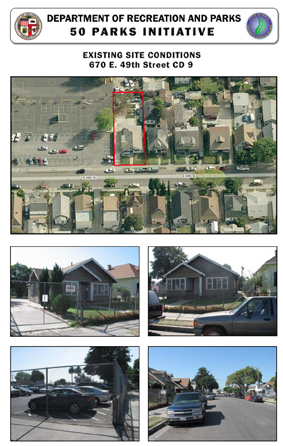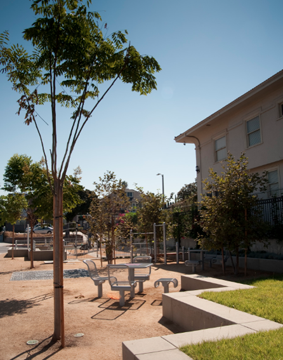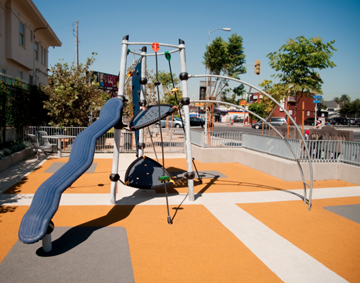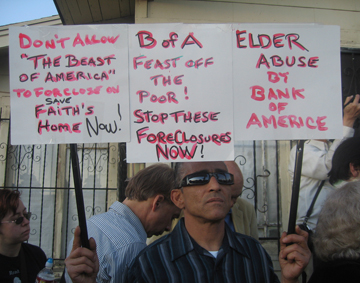 Community activists arrived in droves to a small house on W. 60th St in South Los Angeles late on Wednesday afternoon, with the intent of blocking the eviction of 79 year-old retired teacher Faith Parker.
Community activists arrived in droves to a small house on W. 60th St in South Los Angeles late on Wednesday afternoon, with the intent of blocking the eviction of 79 year-old retired teacher Faith Parker.
“We’re here for unity and justice for everyone,” said Kwazi Nkrumah, from Occupy the Hood, during the rally held in front of the Parker home.
With a great deal of effort, Faith and her husband bought the small South LA home in 1962. When he died in 1976, Faith worked even harder to keep the home where she raised her three children on her own.
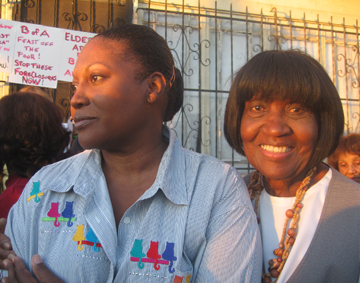 Faith and Saundra Parker. Faith and Saundra Parker. |
According to daughter Saundra Parker, in 2006, at the height of the real estate bubble, the house worth about $350,000. “My mother refinanced and took out a $150,000 loan to pay for some family medical and legal bills without telling me. When I saw the bill the first time I saw it was an adjustable loan. I called Countrywide right away to change it, but they said it couldn’t be done. So we just stuck with it.”
When the adjustable mortgage became too heavy a load in 2008, the Parkers applied for a loan modification with Countrywide. A year later, they received a notice from Bank of America informing them they were the new mortgage holders.They offered a loan modification. Saundra says a bank representative told her they couldn’t proceed, because the loan was not in arrears. “They told me to stop making the payments, so we would go in arrears and then qualify for the loan modification,” she claims.
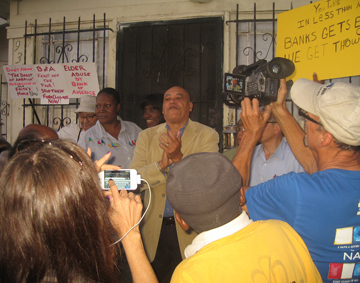 Greg Akili, running for new 59th Assembly seat, joins demonstrators protesting against the foreclosure. Greg Akili, running for new 59th Assembly seat, joins demonstrators protesting against the foreclosure. |
The Parkers stopped making payments in 2009 and filed the paperwork for the loan modification. In May of 2011 they were denied the modification and the house went into foreclosure.
“Bank of America promised to work with my mother, but they lied,” says Saundra. “It’s called greed and elder abuse.”
Faith, who has lived in the same house for the past 50 years, was overwhelmed with emotion at the outpouring of support.
“Thank you, thank you,” she repeated, as she shook hands and hugged people who came to protest her imminent eviction. “What they’re doing is wrong. We have to let everyone know what they’re doing,” she told one supporter.
“We’re here to occupy this house! The moment the eviction notice is put up, we’re going to come here and camp out to protect this family,” exclaimed foreclosure advocate Carlos Marroquín during the demonstration. Marroquín, a spokesman for Occupy LA, helped organize the protest.
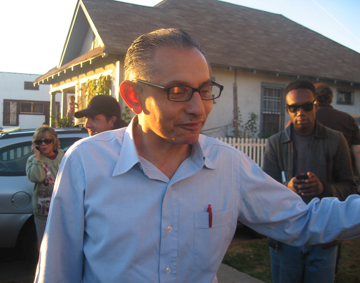 Carlos Marroquin, foreclosure advocate, helped organize the rally. Carlos Marroquin, foreclosure advocate, helped organize the rally. |
“I know what it’s like to be a victim of foreclosure. My house was illegally foreclosed. It destroyed my marriage and my family. So I take this very personally. When I learned they were going after a 79 year-old woman, I had to get involved,” he says.
Among those who came to support the Parkers was community organizer Greg Akili, who is running for the 59th Assembly District. “I came here today because people like the Parkers who need help, they need someone to stand up for them.”
“We demand a moratorium on all foreclosures,” said attorney Susan Daya Hamwi during the many speeches at the rally. “The banks should be held accountable because they’ve committed fraud.”
Several Occupy LA organizers pointed out that demanding an end to foreclosures was going to be a priority for the movement in 2012.
“The Occupy movement has reignited popular struggle looking for economic democracy,” affirmed Kwazi Nkrumah. “If Martin Luther King were here today, he’d be part of this movement.”









 View from La Brea, between Slauson and Stocker, looking West. (Photo by David Roy.)
View from La Brea, between Slauson and Stocker, looking West. (Photo by David Roy.)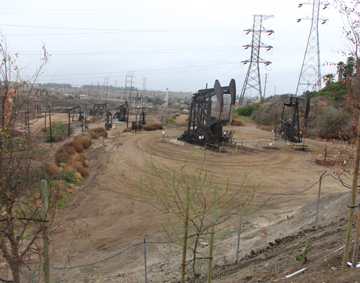 View from La Brea, between Slauson and Stocker, looking West. (Photo by David Roy.)
View from La Brea, between Slauson and Stocker, looking West. (Photo by David Roy.)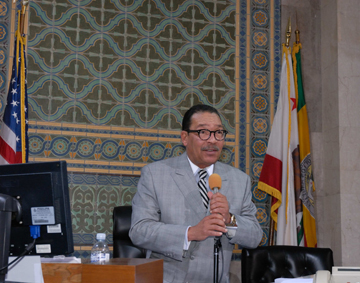 Council President Herb J. Wesson, Jr.
Council President Herb J. Wesson, Jr.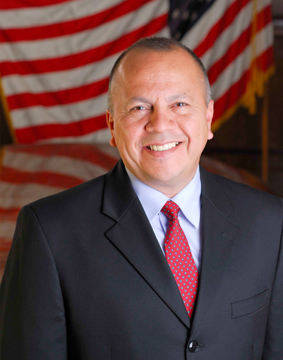 Council President Pro Tempore Ed Reyes
Council President Pro Tempore Ed Reyes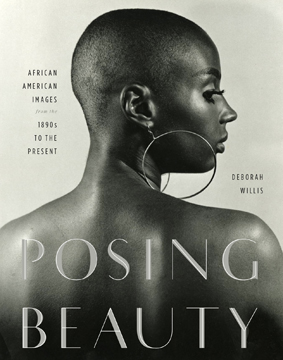 Modeled in a pose often seen in 18th century portraits, photographer Renee Cox sits on a silk, yellow, day bed with her back to the camera. Her head is turned to the side showing off her strong profile and a head full of dark brown and golden dreadlocks. Her posture is graceful, but strong and showcases her taught muscular back. Cox is nude and her rich caramel skin contrasts with the pale yellow cushions. She is wearing red heels and her slightly bent knees exaggerate her ample derrière.
Modeled in a pose often seen in 18th century portraits, photographer Renee Cox sits on a silk, yellow, day bed with her back to the camera. Her head is turned to the side showing off her strong profile and a head full of dark brown and golden dreadlocks. Her posture is graceful, but strong and showcases her taught muscular back. Cox is nude and her rich caramel skin contrasts with the pale yellow cushions. She is wearing red heels and her slightly bent knees exaggerate her ample derrière. 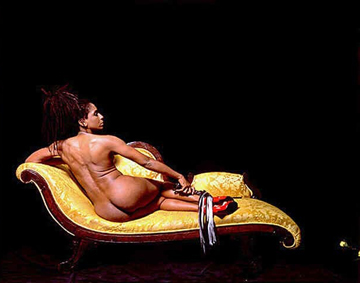 Baby Back by Renee Cox
Baby Back by Renee Cox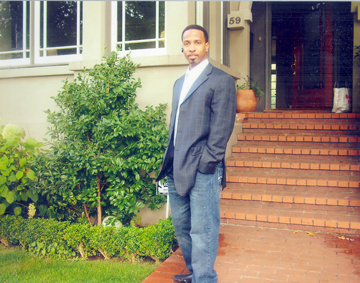 Inside prison, Obie Anthony dreamed of what he was missing as he served out a life sentence for a murder he insists he did not commit. He thought of the green grass, of washing dishes, of biting into the juicy pineapple Teriyaki burger he saw on television ads for Carl’s Jr.
Inside prison, Obie Anthony dreamed of what he was missing as he served out a life sentence for a murder he insists he did not commit. He thought of the green grass, of washing dishes, of biting into the juicy pineapple Teriyaki burger he saw on television ads for Carl’s Jr.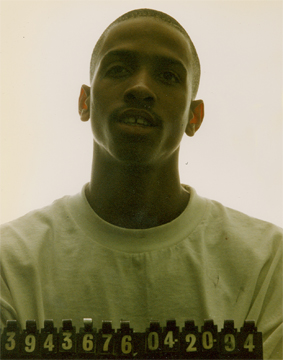 He found himself in and out of juvenile halls for breaking and entering and car theft.
He found himself in and out of juvenile halls for breaking and entering and car theft.  During the last few years in prison, he never went to the chow hall thanks to his fiancée, Denise Merchant, who bought him cereal, rice, beans, chocolate, meat, lotion and all kinds of stuff.
During the last few years in prison, he never went to the chow hall thanks to his fiancée, Denise Merchant, who bought him cereal, rice, beans, chocolate, meat, lotion and all kinds of stuff.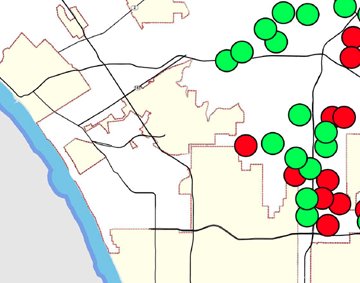 The City of Los Angeles is making a move to create more parks within walking distance.
The City of Los Angeles is making a move to create more parks within walking distance.